Data chaos can feel overwhelming, but with the right strategies, turning complexity into clarity is within reach. Our recent webinar, “Data Integration: Overcoming Challenges with Modern Solutions and AI Assistants,” was led by two industry experts:
Dmytro Voitekh, CTO at S-PRO, has over 10 years of expertise in AI and machine learning. He specializes in feasibility studies, data consultancy, advanced data architecture, and management. His extensive background includes roles as ML Lead at Giphy and consultant at Proxet and Coizy.
Dustin Schulze, Senior Business Analyst at S-PRO, is skilled in architecting data-driven solutions to address complex business challenges. With a wealth of experience in the Big Four, he brings unique insights into data management and strategic decision-making.
“Many companies are sitting on a goldmine of data but are unsure how to extract its value, this webinar focuses on breaking down these barriers to turn data into a strategic resource.” Dustin explained.
Missed the live session? You can still access the full recording here.
The Role of Data Integration in Modern Business
Why does data integration matter in today’s fast-paced business environment? It’s no longer enough to collect data – businesses must treat it as a core asset. Data integration consolidates information from various sources, transforming it into insights for decision-making, analytics, and automation.
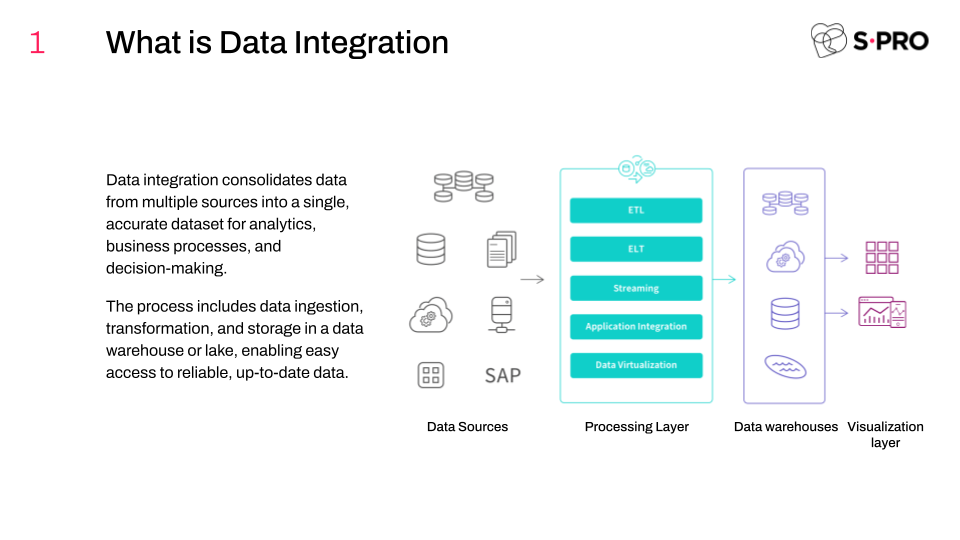
Think of data integration as the foundation of a skyscraper. Without a solid base, any advanced analytics or AI applications will crumble under the weight of complexity.
A Deloitte report highlighted during the session reinforces this perspective, noting how data integration underpins transformative business journeys. Companies like Meta and Netflix, often seen as "data-first" organizations, are prime examples of how integrated data can redefine business models.
It’s not just about operational efficiency. Integrated data empowers businesses to become proactive, predicting challenges before they occur.
Key Challenges and Benefits of Data Integration
Effective data integration isn’t straightforward. Businesses face challenges such as:
- Large Data Volumes: Consolidating vast amounts of data requires scalable infrastructure.
- Diverse Formats: Different systems often use incompatible formats, complicating integration.
- Data Quality Issues: Missing or inconsistent data undermines insights.
- Security Concerns: Protecting sensitive information is critical but often overlooked.
Imagine trying to cook a complex recipe with missing ingredients or instructions in a foreign language. That’s what poor data integration feels like for many organizations.
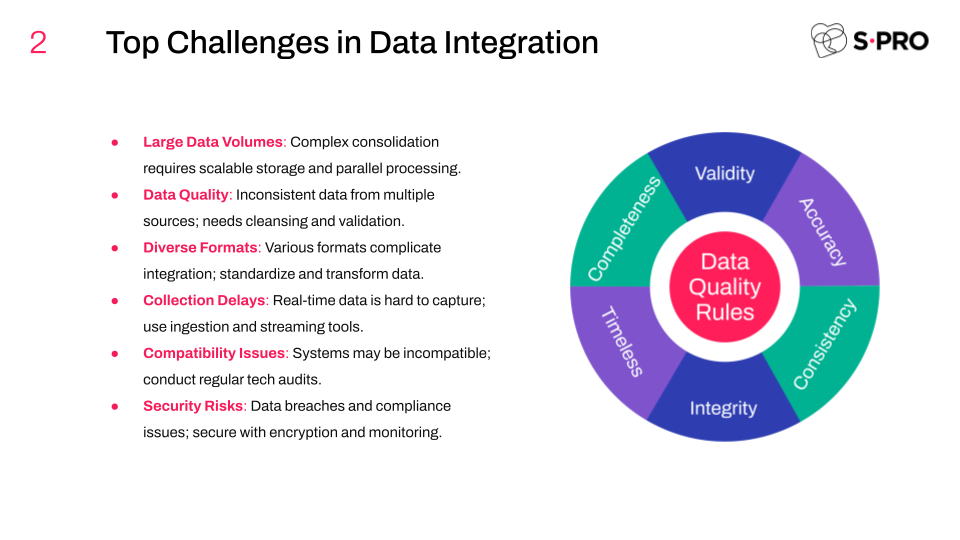
Yet, the benefits far outweigh the hurdles:
- Better Decision-Making: A unified data view allows for informed, faster choices.
- Agility and Innovation: Integrated systems open doors to AI and predictive analytics.
- Regulatory Compliance: Modern solutions simplify adherence to laws like GDPR and HIPAA.
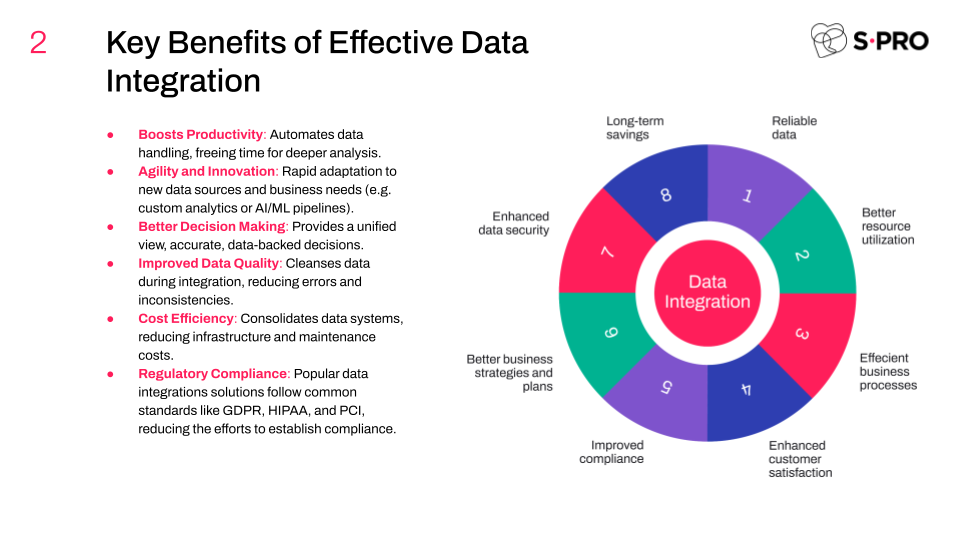
“AI applications depend on data integration. Without it, you’re building castles in the sand,” Dmytro noted:
Market Insights and Trends
The data integration market is booming, expected to grow to $18.71 billion by 2029 (CAGR of 9.2%). What’s driving this growth? Increased adoption of cloud platforms and no-code/low-code tools are making integration accessible to businesses of all sizes.
The shift toward ELT (Extract, Load, Transform) is particularly exciting. By deferring transformations to the data warehouse, businesses gain efficiency without sacrificing control.
AI is playing a pivotal role, automating tasks like anomaly detection and predictive maintenance. Tools like Airbyte’s AI assistant simplify connector creation, reducing development time and human error. We’re seeing a convergence of ease-of-use and power.
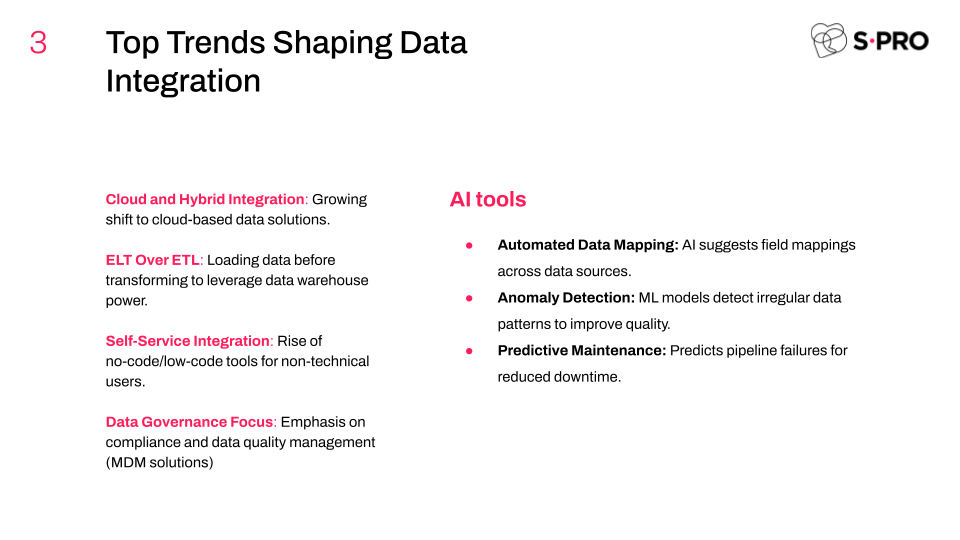
S-PRO Case Studies: Practical Solutions in Action
Modo: Revolutionizing Energy Insights
Modo, an analytical platform for the energy sector, required a robust integration system to process data from diverse sources like market reports and external APIs. S-PRO developed a solution for real-time insights for major clients, including Shell and BP.
Results:
- Improved decision-making with accurate, up-to-date data.
- Streamlined accessibility through intuitive dashboards.
In industries like energy, timing is everything. A slight delay in data processing can mean millions lost.
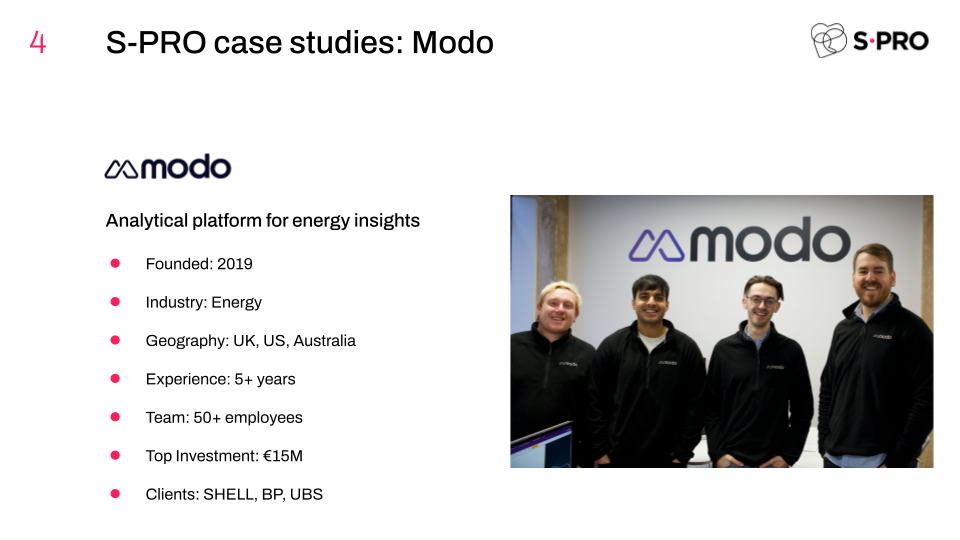
Earlybird: Streamlining VC Operations
Earlybird, a venture capital firm, faced challenges in evaluating investment opportunities efficiently. S-PRO’s AI-driven solution consolidated data from social streams and financial reports, enabling semi-automated due diligence and risk prediction.
Results:
- Faster, data-backed investment decisions.
- Reduced manual workload through automated processes.
Earlybird’s transformation showcases how AI enhances decision-making without replacing human intuition.

Recommendations and Practical Steps for Implementation
- Audit Your Data Landscape: Understand the variety and structure of your data sources.
- Define Integration Goals: Clarify whether you need real-time updates or batch processing.
- Choose Scalable Solutions: Anticipate growth in data volumes.
- Focus on Governance: Assign responsibilities for data quality and security.
- Collaborate Across Teams: Align IT, business, and data teams to ensure smooth implementation.
- Partner with Experts: For complex projects, consult specialists like S-PRO.
As Dmytro concluded:
“The journey to effective data integration isn’t just technical – it’s cultural. Companies must shift their mindset from managing chaos to harnessing opportunity.”
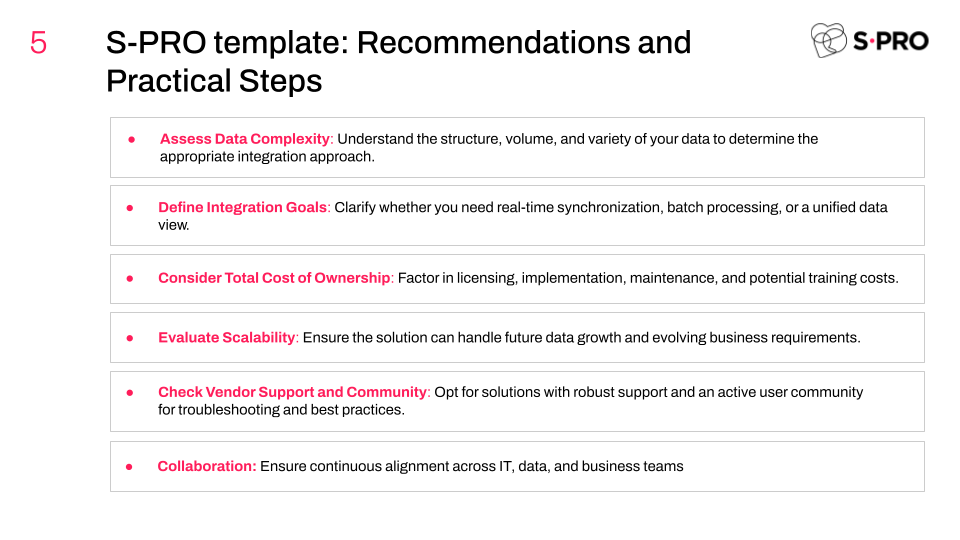
This article provides an in-depth roadmap to navigate data integration challenges and opportunities. Want to dive deeper? Watch the full webinar recording for more insights and practical examples.



